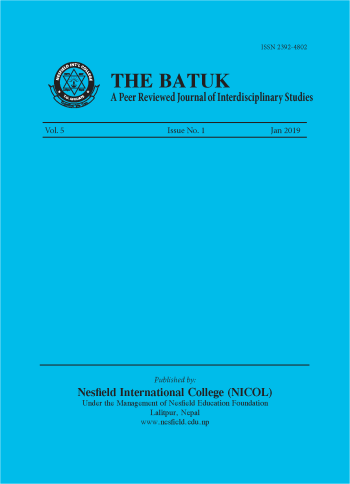William Golding's Lord of the Flies: A Study of Evil in Man
DOI:
https://doi.org/10.3126/batuk.v5i1.27924Keywords:
Evil, Savagery, Primitivism, Barbarism, AggressionAbstract
William Golding's first and the most popular novel Lord of the Flies (1954) presents a depressing truth about man and his nature: here, he portrays inherent evil in man. In this novel there is almost a complete absence of grown-ups, and evil is portrayed through children. It has an instinctual hold upon the human heart. Generally the growth of the inherent evil in human being is kept under control by civilized restraint, but removal of such restriction results in a complete regression into savagery and brutality. This is what happens in the novel too. Therefore, inherent evil in man which brings out the dystopian vision of the post-modern world will be discussed with reference to plot, images, symbols and character in this article. Lust for power and control over other are the evils of society from which even the children are not immune.
Downloads
Downloads
Published
How to Cite
Issue
Section
License
This license enables reusers to distribute, remix, adapt, and build upon the material in any medium or format for noncommercial purposes only, and only so long as attribution is given to the creator.




